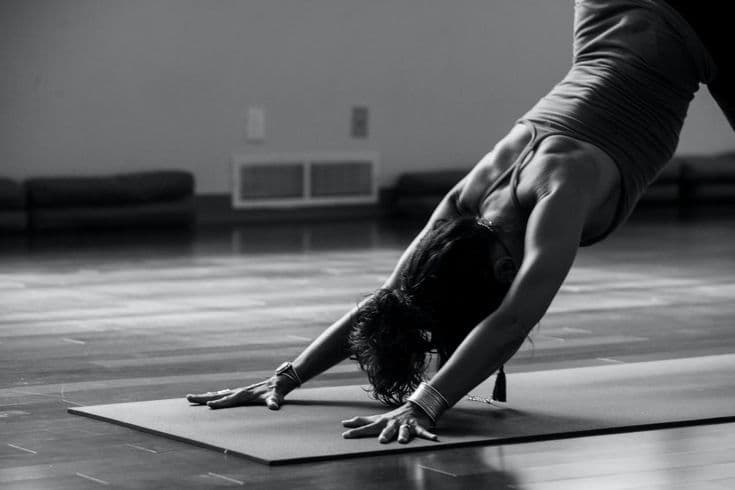Similar words:
Bikram Yoga
What Is Bikram Yoga?
Bikram Yoga is a structured style of hot yoga practiced in a heated room at 105°F (40°C) with 40% humidity, following a set sequence of poses and breathing exercises. Created by Bikram Choudhury in the 1970s, it focuses on building strength, flexibility, and mental endurance. The heat helps loosen muscles, support deeper stretches, and promote detoxification through sweating.
Each 90-minute class follows the same format: 26 postures and 2 breathing exercises, performed in a specific order to ensure a full-body workout. This consistent routine allows practitioners to track progress, refine their technique, and develop resilience—both physically and mentally.
Bikram Yoga attracts those who appreciate structure and discipline. Its benefits include improved flexibility, cardiovascular health, and mental focus. While it can be challenging, it offers a rewarding opportunity to connect breath, movement, and mindfulness in a controlled environment.
Understanding Bikram Yoga
Rooted in Hatha Yoga, Bikram Yoga was designed to be a systematic and accessible practice for all fitness levels. The sequence of 26 postures and 2 breathing exercises works every muscle, joint, and organ, promoting overall well-being.
The heated environment is key to the practice. The high temperature increases circulation, loosens tight muscles, and supports the body's natural detoxification process. It also encourages mental focus and composure under physical stress, making it a challenging yet meditative experience.
The Bikram Yoga Sequence
The Bikram sequence is carefully structured to target different areas of the body, combining:
- Standing postures to build strength and balance.
- Backbends to improve flexibility and spinal health.
- Floor poses to encourage relaxation and deep stretching.
Each pose is held for a set duration, allowing for greater alignment and awareness. The session starts with standing poses like Half Moon Pose and Tree Pose, progresses to backbends like Cobra Pose, and concludes with seated postures for grounding and stillness.
Breathing exercises, Pranayama and Kapalbhati, are essential parts of the class. They regulate breath, enhance lung capacity, and promote focus, creating a sense of calm and clarity throughout the practice.
Benefits of Bikram Yoga
Bikram Yoga offers both physical and mental benefits, making it a well-rounded practice for overall well-being.
- Flexibility and Strength: The heated environment allows muscles to stretch safely, improving range of motion and reducing injury risk. The 26 postures work to strengthen and lengthen muscles for better balance.
- Detoxification: Sweating in the heated room supports the body's natural detox process, helping to clear toxins and promote healthy skin.
- Mental Clarity: Holding poses in challenging conditions enhances focus, patience, and inner calm.
- Cardiovascular Health: The heat and movement elevate heart rate, supporting endurance and metabolism.
Beyond the physical benefits, practicing in a demanding environment builds mental resilience, encouraging patience, perseverance, and self-awareness.
Is Bikram Yoga Good for You?
Bikram Yoga can be a powerful addition to a wellness routine, but it’s important to consider your individual needs and health conditions before starting. It’s particularly beneficial for:
- Individuals looking to improve flexibility, strength, and endurance.
- Those seeking stress relief and mental focus.
- People who enjoy structured routines and physical challenges.
However, practicing in a heated environment can be intense, and beginners may need time to adjust. It’s important to:
- Stay well-hydrated before, during, and after class to prevent dehydration.
- Listen to your body and take breaks as needed.
- Consult a healthcare provider if you have medical conditions, such as heart issues or heat sensitivity.
With the right approach, Bikram Yoga can be a safe and rewarding practice.
Bikram Yoga Training and Classes
Becoming a certified Bikram Yoga instructor involves an intensive training process, focusing on anatomy, teaching techniques, and the philosophy behind the practice. Training programs typically last several weeks, offering an immersive experience.
A typical Bikram Yoga class follows a consistent structure:
- A 90-minute guided session with the same sequence of 26 postures and 2 breathing exercises.
- Instructors provide verbal guidance without physical adjustments.
- The room is maintained at 105°F (40°C) with 40% humidity for optimal practice conditions.
For first-timers:
- Wear lightweight, moisture-wicking clothing.
- Stay hydrated before and after class.
- Bring a yoga mat, towel, and water bottle.
With the right preparation and mindset, Bikram Yoga can be an empowering addition to your wellness routine.
Tips for Practicing Bikram Yoga
Maximizing your experience in Bikram Yoga involves preparation and mindfulness. Some helpful tips include:
- Breathing Techniques: Focus on steady, controlled breathing to stay calm and centered during challenging poses.
- Hydration: Drink plenty of water before and after class to replenish lost fluids and avoid dehydration.
- Managing Heat: Acclimate gradually and take breaks if needed to allow your body to adjust.
- Maintaining Focus: Stay present by concentrating on your breath and listening to your body’s signals.
Approaching each session with patience and consistency can lead to long-term improvements in both physical and mental well-being.
Bringing Bikram Yoga Into Your Life
Incorporating Bikram Yoga into your wellness routine can provide lasting benefits. To build a sustainable practice:
- Start Slowly: Beginners may benefit from attending 2-3 classes per week, gradually increasing frequency as their endurance improves.
- Listen to Your Body: Pay attention to how you feel during and after each class, adjusting intensity as needed.
- Balance with Other Practices: Pairing Bikram Yoga with restorative practices like meditation or gentle stretching can support recovery and overall balance.
With regular practice and mindful progression, Bikram Yoga can become a valuable tool for enhancing overall health and well-being.
